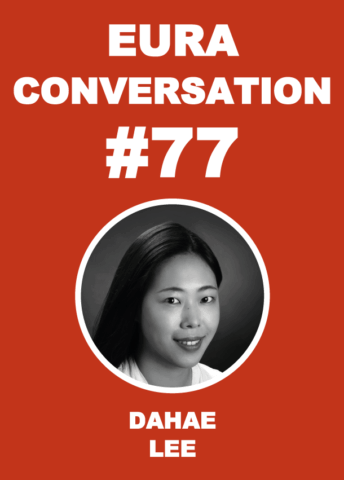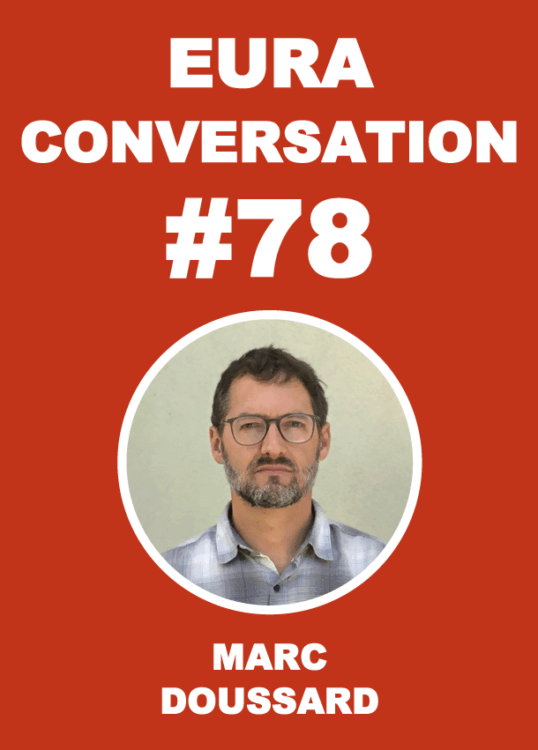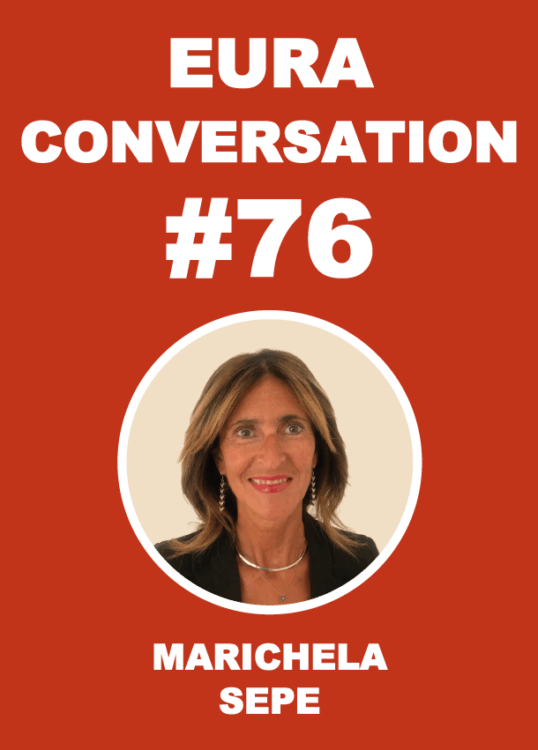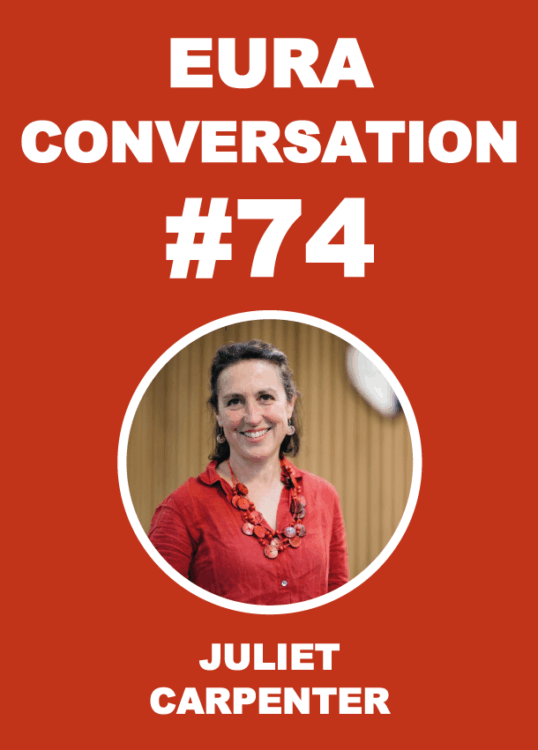
Special Issue on “Overcoming Overtourism” for JPMD – Call for papers
22/10/2025
EURA 2026 – Conference website
30/10/2025Conversation #77
Defining Co-production in Planning.
Why Clarity Matters
by Dahae Lee
Technical University of Dortmund, Germany
 Have you ever found yourself wondering which “co-” concept fits best with your research or project – co-production, co-creation, co-design? And if you have chosen one over another, what guided that decision? Are you confident you understand the differences – not just between the various “co-” concepts, but also across the many other forms of collaboration that exist in research and practice? More importantly, do those differences really matter – and should we even try to define them? If so, then how?
Have you ever found yourself wondering which “co-” concept fits best with your research or project – co-production, co-creation, co-design? And if you have chosen one over another, what guided that decision? Are you confident you understand the differences – not just between the various “co-” concepts, but also across the many other forms of collaboration that exist in research and practice? More importantly, do those differences really matter – and should we even try to define them? If so, then how?
These are the kinds of questions my colleagues and I have been exploring over the past few years, particularly through our research on co-production within the planning discipline. In this blog post, I share some interim findings from our research, reflect on what we have learned so far, discuss where this line of inquiry might lead next – and invite fellow researchers to join the conversation.
In recent years, co-production has become a hot topic in planning research, with a growing number of publications emerging since the 2010s (Lee et al., 2024a). The concept is also widely embraced in planning practice. In Germany, for example, co-production is highlighted in the Leipzig Charter as a core principle for urban development across European cities, with related projects receiving funding from all levels of government.
While there is broad agreement that co-production means actively involving diverse stakeholders in shaping urban spaces, interpretations of the concept vary widely within planning circles. Our own research shows that definitions of co-production in the literature are often inconsistent and vague, with the term frequently used interchangeably with other “co-” concepts (Lee et al., 2024a; Lee et al., 2024b).
One might be wondering: is this really a problem? After all, co-production is not the only concept that suffers from a lack of clear definition. So, why does it matter? Beyond making research on co-production challenging – since varying interpretations make it difficult to compare findings and build on previous work (Brandsen & Honingh, 2015) – our study of case studies has revealed important insights. Co-production naturally involves a diverse group of people, or “co-producers”. When the concept is not clearly defined, it can lead to mismatched expectations and a lack of agreement among those involved. Even when creative methods are used (see Conversation #74), they may not help and can instead slow progress, cause frustration and disappointment, and ultimately affect outcomes. Perhaps most importantly, there is a real risk that the idea of co-production gets misused or even exploited, placing an unfair burden on marginalised communities who contribute their time, energy, and resources without proper recognition or benefit (Schramm, 2024).
What we have also come to understand is that the lack of conceptual clarity is more than just a problem – it is a symptom of a deeper issue. Co-production, originally developed in fields like public administration and economics, has been widely adopted in planning without critical integration. As a result, the concept – shaped by the goals, assumptions, and practices of its parent disciplines – may not fully align with the specific concerns and realities of planning. This disconnect can lead planning scholars and practitioners to selectively adopt whichever version of co-production best fits their immediate needs, rather than engaging with it as a coherent or contextually grounded concept.
To address this, we need to thoughtfully adapt co-production for the planning field. One promising way forward is to study multiple case studies of co-productive planning practices, identifying key characteristics and variations in how co-production is applied. Indeed, as a first step, we identified variations in the degrees of co-production. Rather than seeing co-production as a simple yes-or-no concept, we argue it exists along a spectrum.
To capture this, we developed an evaluative framework outlining different degrees of co-production, which we applied to a case study in Nürnberg in Germany. We then refined the framework further based on empirical insights. Our findings are detailed in a paper currently under review. Moving forward, we hope to apply this framework across multiple case studies to develop a comprehensive taxonomy – and typology – of co-production, using comparative analysis as a key method (Lee et al., 2024c). Using taxonomy and typology to identify different forms of co-production in planning will help address knowledge gaps more effectively.
By thoughtfully adapting co-production within the planning discipline, and bringing greater clarity to its meaning, we can build a stronger foundation for informed and effective action. But this is just the beginning. I invite fellow researchers to join this important conversation – together, we can deepen our understanding, refine the concept, and help shape collaborative planning that truly makes a difference.
References:
Brandsen, T., & Honingh, M. (2015). Distinguishing different types of coproduction: A conceptual analysis based on the classical definitions. Public Administration Review, 76(3), 427-435. Lee, D., Feiertag, P., & Unger, L. (2024a). Defining co-production: A review of the planning literature. Journal of Planning Literature, 39(2), 227-240. Lee, D., Feiertag, P., & Unger, L. (2024b). Co-production, co-creation or co-design of public space? A systematic review. Cities, 154, 105372. Lee, D., Feiertag, P., & Unger, L. (2024c). Editorial. Co-production in the urban setting: Fostering definitional and conceptual clarity through comparative research. Urban Planning, 9. Schramm, S. (2024). Co-production between insurgency and exploitation: Promises and precarities of a travelling concept. Urban Planning, 9.







Thank you, Dahae, for this contribution, which offers a stimulating and well-argued reflection on the urgent need to clarify the meaning of “co-production” and other “co-concepts” within the planning discipline. “Co-production” is now a widely used concept, which, to quote my own work, I would describe as a kind of “magic concept” due to its normative attractiveness and its potential implications for consensus (Bragaglia, 2021; cfr. Pollitt and Hupe, 2011). Who could possibly be against co-production? However, as Dahae rightly points out, in the absence of a clear definition, there is a concrete risk that co-production could become a Trojan horse or, at best, a new way of defining traditional participation processes through more appealing terminology.
Consequently, the proposal to construct a taxonomic and typological framework capable of distinguishing degrees and forms of co-production represents an important step towards consolidating the conceptual basis of the debate, and is particularly promising for overcoming the generic and sometimes instrumental use of this concept.
Beyond the need for conceptual clarity – which indeed allows for better orientation of actions and more consistent retrospective interpretations – I believe it is important to recall that reflection on co-production in planning raises not only a definitional question, but also a systemic and political one. As I have discussed with colleagues in recent work (Bragaglia et al., 2023; Bragaglia et al., 2024), co-production is deeply intertwined with institutional logics and the functioning of planning systems, and therefore cannot be fully understood if separated from the regulatory context and power relations that structure it. From this point of view, I consider Dahae’s invitation to refine a research agenda consisting of various case studies relating to co-productive planning practices to be very important. In this sense, I firmly believe that it would be useful to build, through EURA, a network of scholars in Europe and perhaps even beyond, who are attempting to move towards a more contextualised, systemic and reflective understanding of co-production in the planning discipline.